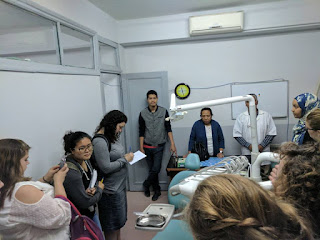Week 5: This week, I have the best time. We
go to Vakoana Forest Lodge Lemur Island.
I have so much opportunity to take photos with lemurs and
camelinas.
Everyone in the program loves
this island because of the lemurs. They
come to play with us very closely. We
also have opportunity to visit the national park. We see one Indri lemur, a few common brown
lemurs, and birds. It is hard to say
goodbye to my homestay at Andasibe. They
have tried as best as they can to take care of me. I love my little five months baby boy so much
and wish to steal him back to US with me.
Week 6: This week we are back to
Antananarivo and our homestay for two nights.
My homestay family has made me feel warm to be back home at Tana. We have a great dinner talk and laugh about
my Andasibe trip.
We also go to
Morondava where we stay at the beach hotel.
I cannot explain how happy everyone is, including me. As I come from Hawaii, Morondava has relieved
my heavy homesick feeling.
We visit the
baobab avenue and the love baobab. It is
such amazing experience. Everyone has
beautiful sunset baobab park photos to take back home.
I cannot take enough photos of the
baobab.
They are so amazing. I finally can do all my assignments here as
well. I am not sure if it is laziness or
the cold that has made procrastinate so much at Antananarivo and Andasibe.
Overall, I enjoyed the varieties of the course materials
that Dr. Nat planned. The course
provides a great deal of lectures and field trips. I learned history, culture, language, and
traditional medicine in Madagascar. In
addition, the program provides lectures on health care policies and modern
medicine in Madagascar. I like that we
have a chance to interview and interact with both traditional and modern
medicine professions.
These interviews
have shown us the difference between the theory and practice of health care in
Madagascar. For example, the doctor at
the primary care center at Andasibe tells us that the center and himself do not
charge patients for consulting. However,
the people and healers tell us that the center and doctor charge patients for
consulting. In theory, public health care
should be free for the people though in reality corruption makes the system not
work as well as it should. I appreciated
all the wonderful materials that the dedicated team provided. I have learned and experienced so much and I
will still keep continuing to learn as Dr. Nat says, “It is in listening that we hear,
in hearing that we know, and in knowing that we understand.”





















